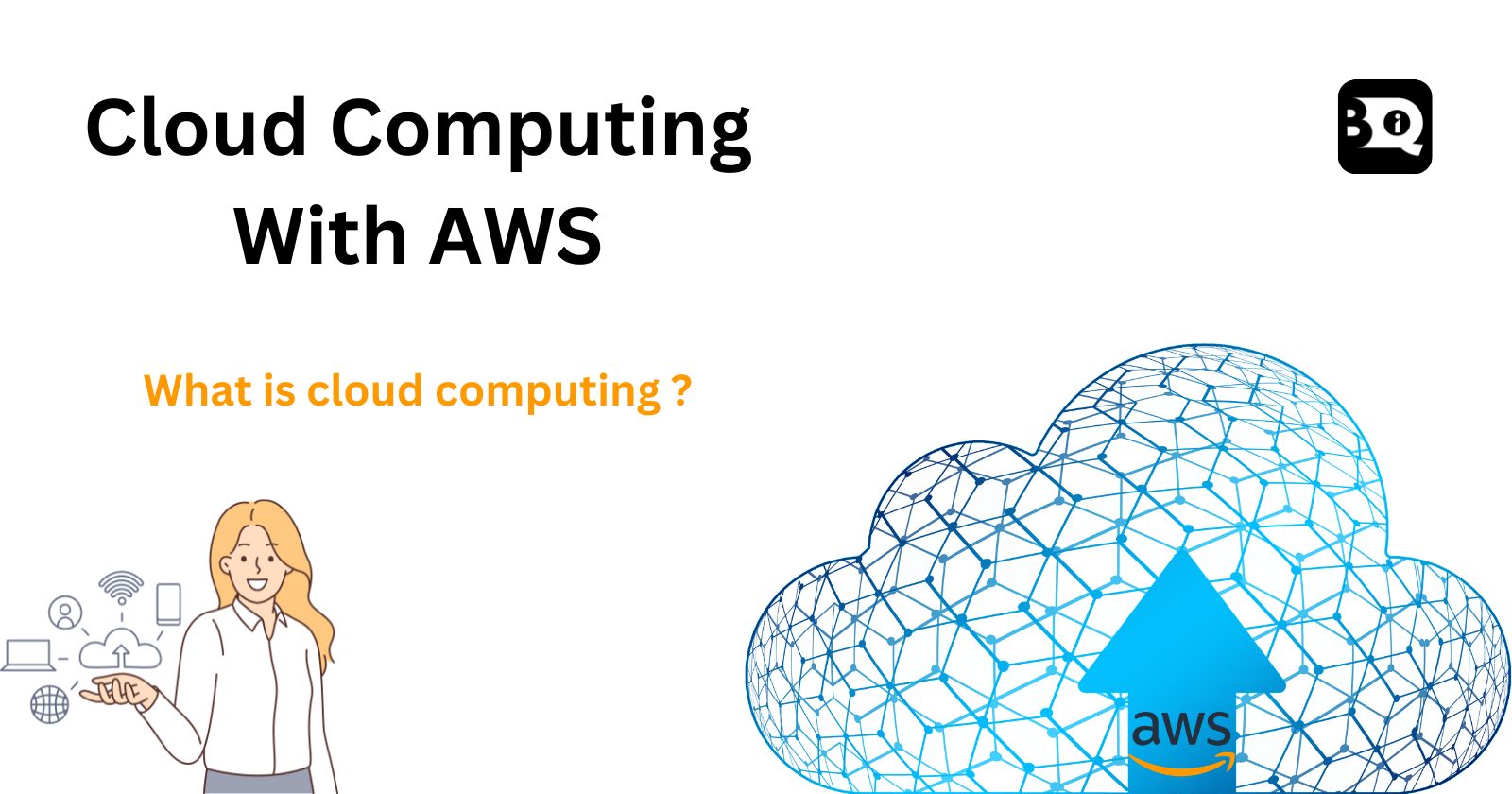What is Cloud Computing ?
 Bosonique ITEdTech
Bosonique ITEdTech
Cloud computing is a revolutionary technology model that enables on-demand access to a broad range of IT resources and services. It allows organizations and individuals to use computing power, storage, and applications over the internet without having to manage the underlying infrastructure.
Key Features of Cloud Computing
On-Demand Delivery
IT resources are provided whenever you need them. You don't have to wait for physical hardware or software installations.
Examples: Compute power, database storage, and application services.
Pay-as-You-Go Pricing
You only pay for what you use, eliminating upfront capital expenses.
Billing is based on actual usage, much like utility services (e.g., electricity).
Scalability and Elasticity
Scale resources up or down based on demand. For example:
If traffic increases, more servers can be provisioned automatically.
During low usage, you can reduce resources to save costs.
Wide Range of Services
Cloud providers offer various services, such as:
Compute: Virtual machines (e.g., EC2).
Storage: Databases and object storage (e.g., S3, RDS).
Networking: Load balancers, virtual private clouds.
Application Services: Machine learning, analytics, IoT, and more.
Global Accessibility
- Access resources and applications from anywhere via the internet, enabling remote work and global collaboration.
Advantages of Cloud Computing
Cost Efficiency
No need for physical data centers or hardware purchases.
Reduces operational costs and infrastructure maintenance.
Speed and Agility
Resources are provisioned within minutes.
Accelerates innovation as developers can quickly test and deploy applications.
Flexibility
Choose the right type and size of resources for your specific needs.
Supports a wide range of workloads, from small websites to complex machine learning models.
Security and Reliability
Leading cloud providers invest heavily in security measures.
Resources are replicated across multiple regions, ensuring high availability and disaster recovery.
Focus on Core Business
Offloads infrastructure management to the cloud provider.
Businesses can focus on innovation and delivering value to customers.
Role of Amazon Web Services (AWS) in Cloud Computing
Network-Connected Hardware
- AWS manages the physical infrastructure, such as data centers and servers, allowing customers to focus on usage rather than maintenance.
Wide Range of Services
AWS provides compute power (e.g., EC2), storage (e.g., S3), databases (e.g., RDS), and more.
It also offers advanced services like machine learning (SageMaker), analytics (Redshift), and serverless computing (Lambda).
Web-Based Provisioning
- AWS resources can be easily managed through a web interface, SDKs, or APIs.
Global Reach
- AWS operates data centers worldwide, ensuring low-latency access and compliance with regional regulations.
Example Use Cases of Cloud Computing
Web Hosting
- Host websites and applications using scalable infrastructure.
Data Analytics
- Analyze massive datasets using tools like AWS Redshift or Azure Synapse.
Machine Learning
- Train and deploy ML models without managing complex infrastructure.
Disaster Recovery
- Use cloud-based backups for quick recovery in case of system failures.
Software Development and Testing
- Set up virtual environments for development and testing on demand.
Key Concepts to Remember
Resource Provisioning: Allocate just the resources you need for your workload.
Elasticity: Grow and shrink resources dynamically.
Global Distribution: Use resources in regions closest to your users for better performance.
Shared Responsibility Model: Cloud providers handle the infrastructure; users manage their applications and data security.
Summary
Cloud computing is the delivery of IT resources, such as computing power, storage, and applications, over the internet on a pay-as-you-go basis. It eliminates the need for physical infrastructure management, allowing businesses and individuals to access resources instantly and scale them based on demand.
Key benefits include cost efficiency, scalability, global accessibility, and enhanced security. Users pay only for the resources they consume, making it a flexible and economical solution. Cloud providers like Amazon Web Services (AWS) handle the underlying hardware, offering a wide range of services including compute, storage, databases, machine learning, and analytics.
This model enables faster innovation, agility, and a focus on core business goals by offloading infrastructure management to the cloud provider. Cloud computing supports various use cases like web hosting, data analytics, disaster recovery, and machine learning, making it essential for modern IT solutions.
Subscribe to my newsletter
Read articles from Bosonique ITEdTech directly inside your inbox. Subscribe to the newsletter, and don't miss out.
Written by

Bosonique ITEdTech
Bosonique ITEdTech
As a Full-Stack Developer with a passion for staying on the cutting edge of technology, I bring a unique blend of creativity and technical expertise to every project. With extensive experience in web development, I have built an impressive portfolio of successful projects that range from intuitive user interfaces to complex backend systems. As a AWS DevOps engineer, I am dedicated to optimizing development workflows and reducing costs through automation, cloud computing, and infrastructure management. My ability to work collaboratively and think outside the box make me an asset to any team.